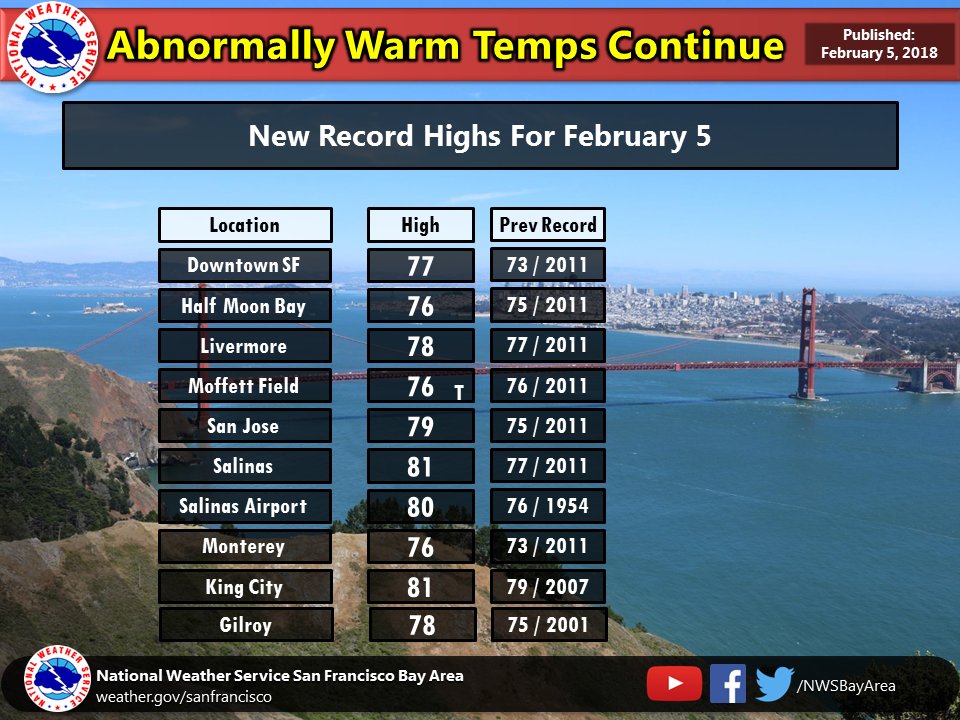Monday February 5th… Dear Diary. The main purpose of this ongoing post will be to track United States extreme or record temperatures related to climate change. Any reports I see of ETs will be listed below the main topic of the day. I’ll refer to extreme temperatures as ETs (not extraterrestrials)😊. Here is today’s climate change related topic:
New Global Record Stats For A New Year
As human beings we find it necessary to reference an amount of time to help categorize just about anything be it, for example, in the financial sector with quarterly earnings, or in the world of science when X number of events occur in Y days. This is especially true in climatology. So, when a new year comes around we start to catalogue and reference temperature and precipitation averages beginning on January 1st. When that year ends summaries are done, and statements such as “2016 was the warmest year in recorded history” can be made. Sometimes, though, trends can be lost when shorter time periods are referenced. Yes, many of my colleagues prior to 2016 cringed when global average charts starting around a record hot 1998 showed that there was “no warming” or that “global warming had ceased.”
It’s good that the National Center for Environmental Information’s temperature record site has a floating 365 day counter so a yearly trend won’t be lost after the calendar changes to January 1. Here is what we have for February 5th, 2018:

Wow! A very Happy New Year! It looks like 2018 is going to be a cold year. Global warming has ended or at least taken a pause looking at the types of cold records that have occurred since January 1st. Er…Well, no if you look at the 365 day counter. Also, keep in mind that most of these counts came from a rather cold United States. Preliminarily, here is what happened globally in January 2018:
 Kees van der Leun @Sustainable2050
Kees van der Leun @Sustainable2050
[EU analysis]



 NWS Bay AreaVerified account @NWSBayArea
NWS Bay AreaVerified account @NWSBayArea


 NWS SacramentoVerified account @NWSSacramento
NWS SacramentoVerified account @NWSSacramento


Borrego broke the record high for today at 85 F. Old record was 84 F in 2001.
#CAwx #SanDiegoWX

